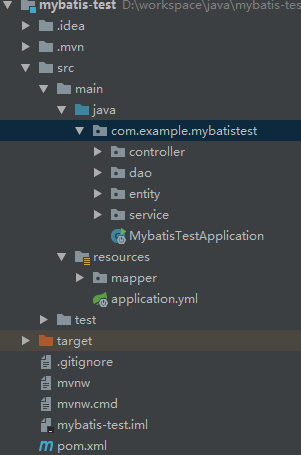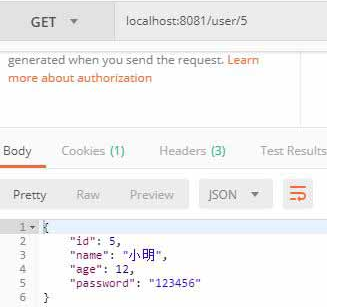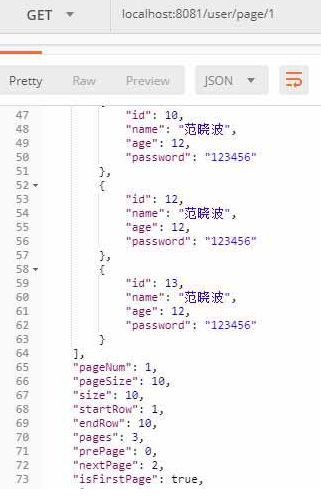## 写在前面
刚毕业的第一份工作是java开发,项目中需要用到mybatis,特此记录学习过程,这只是一个简单demo,mybatis用法很多不可能全部写出来,有更复杂的需求建议查看mybatis的官方中文文档,[点击跳转](http://www.mybatis.org/mybatis-3/zh/index.html)。下面时项目环境/版本。
- 开发工具:IDEA
- jdk版本:1.8
- springboot版本:2.03
其他依赖版本见下面pom.xml:
```xml
4.0.0
com.example
mybatis-test
0.0.1-SNAPSHOT
jar
mybatis-test
Demo project for Spring Boot
org.springframework.boot
spring-boot-starter-parent
2.0.3.RELEASE
UTF-8
UTF-8
1.8
org.springframework.boot
spring-boot-starter-web
mysql
mysql-connector-java
runtime
org.mybatis.spring.boot
mybatis-spring-boot-starter
1.3.2
com.alibaba
druid-spring-boot-starter
1.1.9
com.github.pagehelper
pagehelper-spring-boot-starter
1.2.5
org.springframework.boot
spring-boot-starter-test
test
org.springframework.boot
spring-boot-maven-plugin
```
## 1.创建项目
使用idea中的spring initializr生成maven项目,项目命令为mybatis-test,选择web,mysql,mybatis依赖,即可成功。(详细过程不赘述,如有需要学习springboot创建过程,可参考[这篇文章]()。
然后依照上面的pom文件,补齐缺少的依赖。接着创建包entity,service和mybatis映射文件夹mapper,创建。为了方便配置将application.properties改成application.yml。由于我们时REST接口,故不需要static和templates目录。修改完毕后的项目结构如下:

修改启动类,增加`@MapperScan("com.example.mybatistest.dao") `,以自动扫描dao目录,避免每个dao都手动加`@Mapper`注解。代码如下:
```java
@SpringBootApplication
@MapperScan("com.example.mybatistest.dao")
public class MybatisTestApplication {
public static void main(String[] args) {
SpringApplication.run(MybatisTestApplication.class, args);
}
}
```
修改application.yml,配置项目,代码如下:
```yml
mybatis:
#对应实体类路径
type-aliases-package: com.example.mybatistest.entity
#对应mapper映射文件路径
mapper-locations: classpath:mapper/*.xml
#pagehelper物理分页配置
pagehelper:
helper-dialect: mysql
reasonable: true
support-methods-arguments: true
params: count=countSql
returnPageInfo: check
server:
port: 8081
spring:
datasource:
name: mysqlTest
type: com.alibaba.druid.pool.DruidDataSource
#druid连接池相关配置
druid:
#监控拦截统计的filters
filters: stat
driver-class-name: com.mysql.jdbc.Driver
url: jdbc:mysql://localhost:3306/test?useUnicode=true&characterEncoding=utf-8&useSSL=true
username: root
password: 123456
#配置初始化大小,最小,最大
initial-size: 1
min-idle: 1
max-active: 20
#获取连接等待超时时间
max-wait: 6000
#间隔多久检测一次需要关闭的空闲连接
time-between-eviction-runs-millis: 60000
#一个连接在池中的最小生存时间
min-evictable-idle-time-millis: 300000
#打开PSCache,并指定每个连接上PSCache的大小。oracle设置为true,mysql设置为false。分库分表设置较多推荐设置
pool-prepared-statements: false
max-pool-prepared-statement-per-connection-size: 20
http:
encoding:
charset: utf-8
enabled: true
```
## 2.编写代码
首先创建数据表,sql语句如下:
```sql
CREATE TABLE `user` (
`id` int(11) NOT NULL AUTO_INCREMENT,
`name` varchar(255) NOT NULL,
`age` tinyint(4) NOT NULL DEFAULT '0',
`password` varchar(255) NOT NULL DEFAULT '123456',
PRIMARY KEY (`id`)
) ENGINE=InnoDB AUTO_INCREMENT=0 DEFAULT CHARSET=utf8;
```
然后在entity包中创建实体类User.java
```java
public class User {
private int id;
private String name;
private int age;
private String password;
public User(int id, String name, int age, String password) {
this.id = id;
this.name = name;
this.age = age;
this.password = password;
}
public User(){}
//getter setter自行添加
}
```
在dao包下创建UserDao.java
```java
public interface UserDao {
//插入用户
int insert(User user);
//根据id查询
User selectById(String id);
//查询所有
List selectAll();
}
```
在mapper文件夹下创建UserMapper.xml,具体的xml编写方法查看文首的官方文档。
```xml
user
id,name,age,password
INSERT INTO
name,password,
age
#{name,jdbcType=VARCHAR},#{password},
#{age}
```
至此使用mybatis的代码编写完了,之后要用时调用dao接口中的方法即可。
## 3.测试
我们通过编写service,controller然后使用postman进行测试。
首先编写UserService.java,代码如下:
```java
@Component
public class UserService {
@Autowired
private UserDao userDao;
public User getByUserId(String id){
return userDao.selectById(id);
}
//获取全部用户
public List getAll(){
return userDao.selectAll();
}
//测试分页
public PageInfo getAll(int pageNum,int pageSize){
PageHelper.startPage(pageNum,pageSize);
List users = userDao.selectAll();
System.out.println(users.size());
PageInfo result = new PageInfo<>(users);
return result;
}
public int insert(User user){
return userDao.insert(user);
}
}
```
编写UserController.java
```java
@RestController
public class UserController {
@Autowired
private UserService userService;
@GetMapping("/user/{userId}")
public User getUser(@PathVariable String userId){
return userService.getByUserId(userId);
}
@GetMapping("/user")
public List getAll(){
return userService.getAll();
}
@GetMapping("/user/page/{pageNum}")
public Object getPage(@PathVariable int pageNum,
@RequestParam(name = "pageSize",required = false,defaultValue = "10") int pageSize){
return userService.getAll(pageNum,pageSize);
}
@PostMapping("/user")
public Object addOne(User user){
userService.insert(user);
return user;
}
}
```
启动项目,通过postman进行请求测试,测试结果如下:
- 插入数据:

- 查询数据

- 分页查询

## 4.注解编写sql
上面使用的是xml方式编写sql代码,其实mybatis也支持在注解中编写sql,这样可以避免编写复杂的xml查询文件,但同时也将sql语句耦合到了代码中,也不易实现复杂查询,因此多用于简单sql语句的编写。
要使用注解首先将applicaton.yml配置文件中的`mapper-locations: classpath:mapper/*.xml`注释掉。然后在UserDao.java中加入sql注解,代码如下:
```java
public interface UserDao {
//插入用户
@Insert("insert into user(name,age,password) value(#{name},#{age},#{password})")
@Options(useGeneratedKeys=true,keyColumn="id",keyProperty="id")
int insert(User user);
//根据id查询
@Select("select * from user where id=#{id}")
User selectById(String id);
//查询所有
@Select("select * from user")
List selectAll();
}
```
然后重新启动项目测试,测试结果跟上面完全一样。
```
如果对你有帮助记得点赞、收藏哦!
```